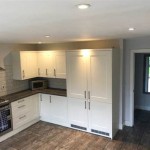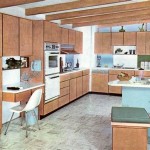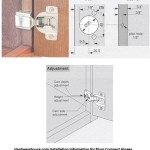Adding Molding Above Kitchen Cabinets: A Guide to Enhancing Your Kitchen
Adding molding above kitchen cabinets is a simple yet effective way to elevate the aesthetic appeal of your kitchen. It can transform a plain and basic space into a more sophisticated and visually appealing one. This detail adds architectural interest, creates a sense of cohesion, and enhances the overall design of the kitchen. This guide provides a comprehensive step-by-step process for adding molding above kitchen cabinets, equipping you with the necessary knowledge and techniques to achieve a successful outcome.
Choosing the Right Molding
The first step involves selecting the appropriate molding for your kitchen. Various types of molding are available, and the choice should be made considering the overall style of the kitchen and personal preferences. Here are some popular options:
- Crown molding: This traditional molding features a curved profile and is often used to create a smooth transition between the wall and the ceiling. It adds elegance and sophistication to the space.
- Cove molding: This molding has a concave profile and is known for its simple and understated design. It creates a subtle visual effect and complements modern and minimalist kitchens.
- Chair rail molding: While typically used to protect walls from chairs, chair rail molding can also be an attractive option above cabinets. It offers a horizontal line that draws attention to the upper portion of the kitchen.
- Picture frame molding: This option creates a distinct frame around the cabinet area, highlighting the cabinetry and adding a decorative touch.
Consider the height of your cabinets, the desired aesthetic, and the overall design of the kitchen when selecting the molding. It's also essential to choose a material that complements the existing cabinetry, such as wood or painted MDF.
Preparing for Installation
Once the molding is selected, preparing the area is crucial for a smooth and successful installation. This involves the following steps:
- Measure and mark the area: Measure the length of the wall where the molding will be installed. Use a level to mark a straight line across the wall, ensuring that the line is parallel to the cabinets' upper edge.
- Clean the surface: Remove any dust, dirt, or grease from the wall using a damp cloth. This will ensure that the adhesive or nails hold securely.
- Cut the molding to size: Use a miter saw or a hand saw to cut the molding to the desired length. Remember to make accurate cuts, especially for corners and mitered joints.
- Prepare the adhesive or nails: Depending on the chosen method, you may need to apply adhesive to the back of the molding or prepare nails for installation.
These steps should be completed meticulously to ensure a smooth and professional installation process.
Installing the Molding
Installing the molding can be done in two ways: using adhesive or using nails. Let's explore both methods:
Installation using adhesive
- Apply a bead of construction adhesive to the back of the molding, ensuring even coverage.
- Position the molding along the marked line on the wall.
- Use a level and a block of wood to press the molding firmly against the wall, allowing the adhesive to bond.
- Hold the molding in place for a few minutes to ensure a secure bond.
Installation using nails
- Mark the locations for nails along the molding, ensuring they are evenly spaced.
- Use a nail gun or a hammer to drive the nails into the wall, making sure they are countersunk for a flush finish.
- Use a small amount of wood filler to cover the nail holes and create a seamless finish.
Both methods offer effective solutions for installing molding above cabinets. Choose the method that best suits your skills and the specific requirements of your project.
Finishing Touches
Once the molding is installed, a few finishing touches can enhance the overall aesthetic appeal. These may include:
- Caulking the gaps: Apply a thin bead of caulk along the edges of the molding where it meets the wall and the cabinets. This creates a seamless and professional finish.
- Painting or staining the molding: Choose a paint color or stain that complements the surrounding cabinetry and the overall kitchen design.
- Adding decorative accents: Consider adding decorative accents such as corbels or brackets to further enhance the visual appeal of the molding. These accents can be selected to match the style of the kitchen.
These finishing touches add sophistication and complete the transformation of the kitchen.

Adding Crown Molding To Kitchen Cabinets Young House Love

Diy Kitchen Cabinet Upgrade With Paint And Crown Molding

Closing The Space Above Kitchen Cabinets Remodelando La Casa

Adding Height To The Kitchen Cabinets Tempting Thyme

Adding Moldings To Your Kitchen Cabinets Remodelando La Casa

Diy Kitchen Cabinet Upgrade With Paint And Crown Molding

Adding Crown Molding To Your Kitchen Cabinets Cabinet Trim

How To Add Crown Molding Kitchen Cabinets Abby Organizes

Adding Height To The Kitchen Cabinets Tempting Thyme

Adding Crown Moulding To Wall Kitchen Cabinets Momplex Vanilla Ana White
Related Posts








